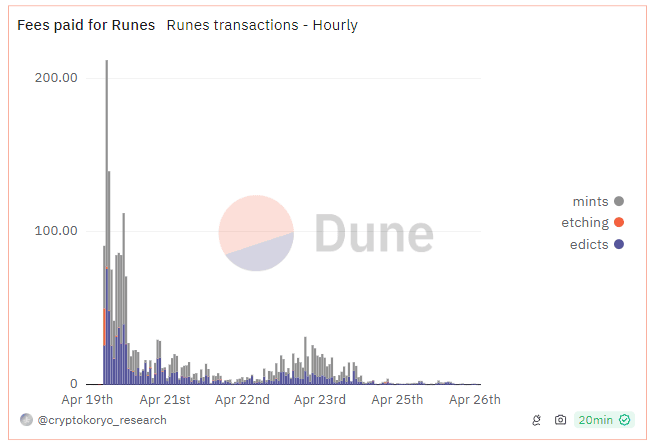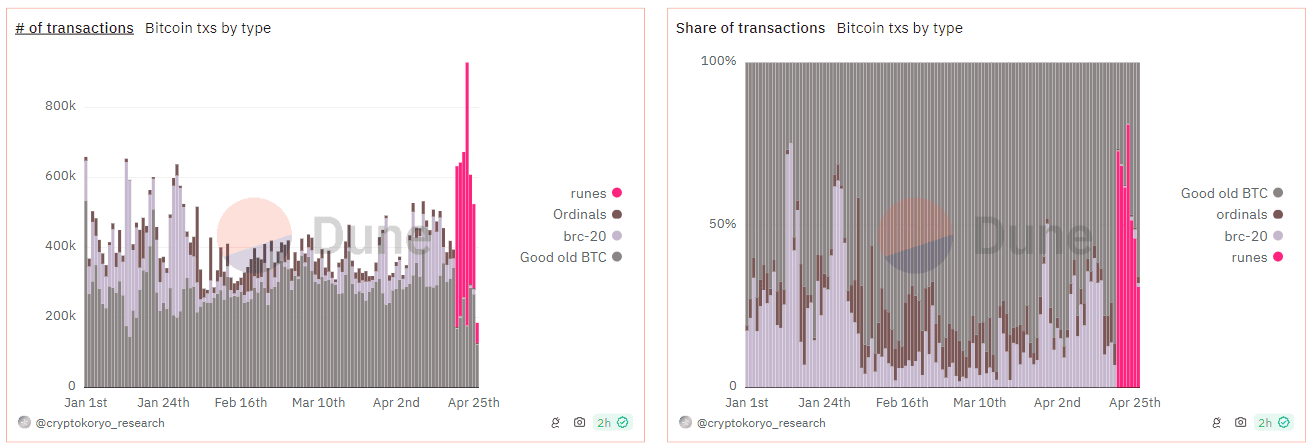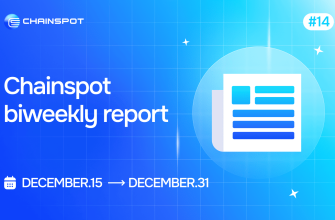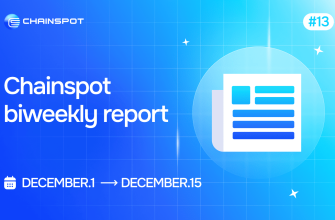Since its inception, the Runes protocol has amassed a staggering 2129 BTC, equivalent to $135.6 million, in fees, as reported by Dune. The project emerged immediately following Bitcoin’s fourth halving event.
Noteworthy is the distribution of fees, with the bulk being generated in the initial days post-halving.

During the time of reporting, transactions involving tokens built on the Runes platform constitute 31% of the total fee volume. In the immediate aftermath of the halving, this percentage peaked at 81%.

The network has processed a substantial 3.6 million transactions involving Runes tokens, significantly amplifying the blockchain’s workload.
On the halving day, the average Bitcoin network fee soared beyond $100. However, as of April 25, 2024, it has subsided to $12.9, according to BitInfoCharts.

This surge in fees has surprisingly led to an increase in revenues for Bitcoin miners, contrary to the anticipated decline.












